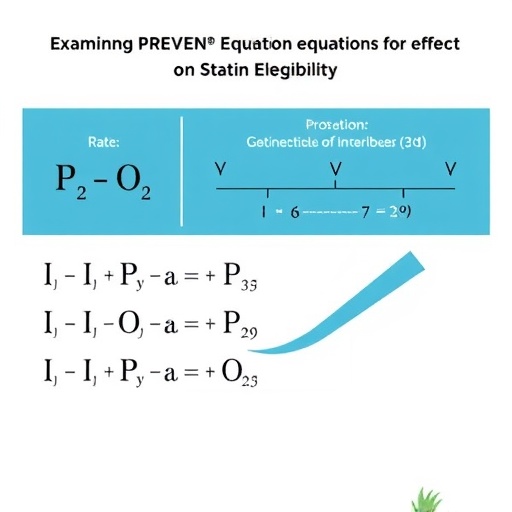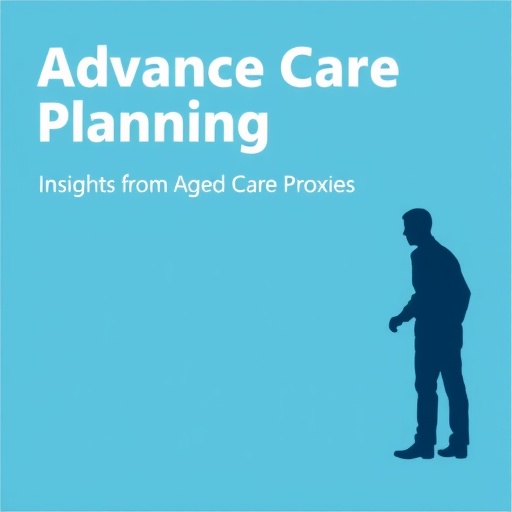In a profound exploration of cardiovascular health, a groundbreaking study published in the Journal of General Internal Medicine has unveiled the impact of the PREVENT cardiovascular risk equations on statin eligibility across various subgroups and risk thresholds. This research has ignited conversation within the medical community, providing new insights into how we assess the need for statin therapy in diverse populations.
The researchers, led by Wright, A.P., and joined by collaborators McCoy, A.B., and Garcia, K., undertook a comprehensive examination of how the PREVENT risk equations operate in real-world conditions. Their investigation focused on the implications of these equations for determining statin treatment eligibility, which is crucial in the backdrop of rising cardiovascular disease rates globally. Statins, widely prescribed to lower cholesterol levels and reduce cardiovascular events, are not universally recommended, hence understanding their appropriate allocation has significant public health implications.
What sets this study apart from previous research is its methodical approach. The authors utilized a cross-sectional design, analyzing a diverse cohort of patients to evaluate the effectiveness of the PREVENT equations in predicting cardiovascular risks. This method enabled them to assess the differential impacts on various demographic subgroups, including age, gender, and pre-existing health conditions, while also considering differing risk thresholds for statin therapy. This nuanced stratification is essential to ensure that high-risk patients are appropriately targeted for preventive interventions.
The findings revealed notable disparities in statin eligibility when assessed through conventional guidelines compared to the PREVENT equations. Under the traditional risk assessment models, many patients deemed eligible for statin therapy were identified as such without the consideration of their full health profiles. In contrast, the PREVENT equations provided a more granulated understanding of individual risk, thereby refining eligibility criteria and potentially minimizing overtreatment. The implications are profound, leading to a paradigm shift in how clinicians approach cardiovascular risk management.
An encouraging takeaway from the study is the potential for enhanced patient outcomes through a tailored application of the PREVENT risk equations. By incorporating these equations into clinical practices, healthcare providers could not only optimize the initiation of statin therapy but also personalize treatment decisions based on an individual’s specific risk factors. This precision medicine approach aligns with current trends in healthcare that emphasize individualized patient care over one-size-fits-all solutions.
Moreover, the research suggests that the adoption of the PREVENT risk equations could lead to more equitable distribution of healthcare resources. Traditionally, underserved populations have faced significant barriers to accessing preventive care and receiving statin therapy. By accurately identifying high-risk individuals regardless of demographic factors, practitioners can bridge these gaps and ensure that all patients receive necessary preventive interventions.
The study does not merely stop at statistical findings; it opens the floor for further investigations into the long-term impacts of using the PREVENT equations in clinical settings. Questions arise about how these equations can integrate with other biomarkers and health indicators to develop a composite risk assessment tool that is even more predictive of cardiovascular events. Future research will undoubtedly build on these findings, potentially leading to innovations that push the boundaries of cardiovascular disease prevention.
As the discourse surrounding statin therapy and cholesterol management continues to evolve, the significance of the PREVENT risk equations cannot be overstated. This research adds to the body of evidence advocating for a shift towards a more analytical, risk-based approach to treatment. It emphasizes the need to consistently question long-standing practices, ensuring they remain relevant in light of emerging data and societal health needs.
In conclusion, the study’s outcomes not only enhance our understanding of cardiovascular risk assessment but also provoke a broader conversation about healthcare equity, personalized medicine, and the importance of evidence-based clinical guidelines. It serves as a crucial stepping stone towards optimizing preventive care strategies in the pursuit of reducing the burden of cardiovascular disease.
Ultimately, the implications of the PREVENT cardiovascular risk equations may reverberate through clinical practice, influencing the decision-making processes of healthcare providers and shaping the future of preventive cardiology. As we move forward, the medical community must remain vigilant in leveraging new research to refine treatment approaches, ensuring patient safety and optimal healthcare outcomes in the face of rising cardiovascular incidences worldwide.
The conversations initiated by Wright and colleagues are likely to resonate through the halls of medical conferences, scholarly journals, and clinical practices, influencing upcoming research avenues that may redefine our collective approach to cardiovascular health in the years to come.
With this pivotal study, the authors shine a spotlight on the urgent need to integrate innovative risk assessment tools into routine practice, championing a movement towards better-targeted prevention strategies that could save millions of lives.
In an era where precision medicine is becoming the standard, the research establishes a foundation for future inquiries into the optimization of cardiovascular risk management and reinforces the importance of continually updating clinical practices in accordance with the latest evidence. It’s a call to action for healthcare providers, researchers, and policymakers alike—an opportunity to significantly alter the landscape of cardiovascular disease prevention.
This study heralds a turning point for those grappling with the challenges of managing heart health in a diverse patient population, proving that with the right tools, it is possible to dramatically shift the paradigm towards more proactive and preventive care strategies.
In sum, the investigation into the PREVENT cardiovascular risk equations is not merely a study but rather a clarion call for reform within cardiovascular healthcare, urging a transformation that prioritizes patient-centered approaches grounded in solid, statistically backed research.
Subject of Research: The impact of PREVENT cardiovascular risk equations on statin eligibility by subgroup and risk thresholds.
Article Title: Impact of PREVENT Cardiovascular Risk Equations on Statin Eligibility by Subgroup and Risk Thresholds: A Cross-Sectional Study.
Article References:
Wright, A.P., McCoy, A.B., Garcia, K. et al. Impact of PREVENT Cardiovascular Risk Equations on Statin Eligibility by Subgroup and Risk Thresholds: A Cross-Sectional Study.
J GEN INTERN MED (2025). https://doi.org/10.1007/s11606-025-09858-z
Image Credits: AI Generated
DOI:
Keywords: Cardiovascular Risk, Statin Eligibility, Preventive Medicine, Health Equity, Personalized Treatment.
Tags: cardiovascular disease prevention strategiescardiovascular health assessmentcholesterol-lowering medicationscross-sectional study design in medicinedemographic impacts on statin usediverse patient cohorts in researchimplications for healthcare policyPREVENT cardiovascular risk equationspublic health implications of statinsrisk thresholds for statin prescriptionstatin therapy eligibilityunderstanding cardiovascular risk factors





